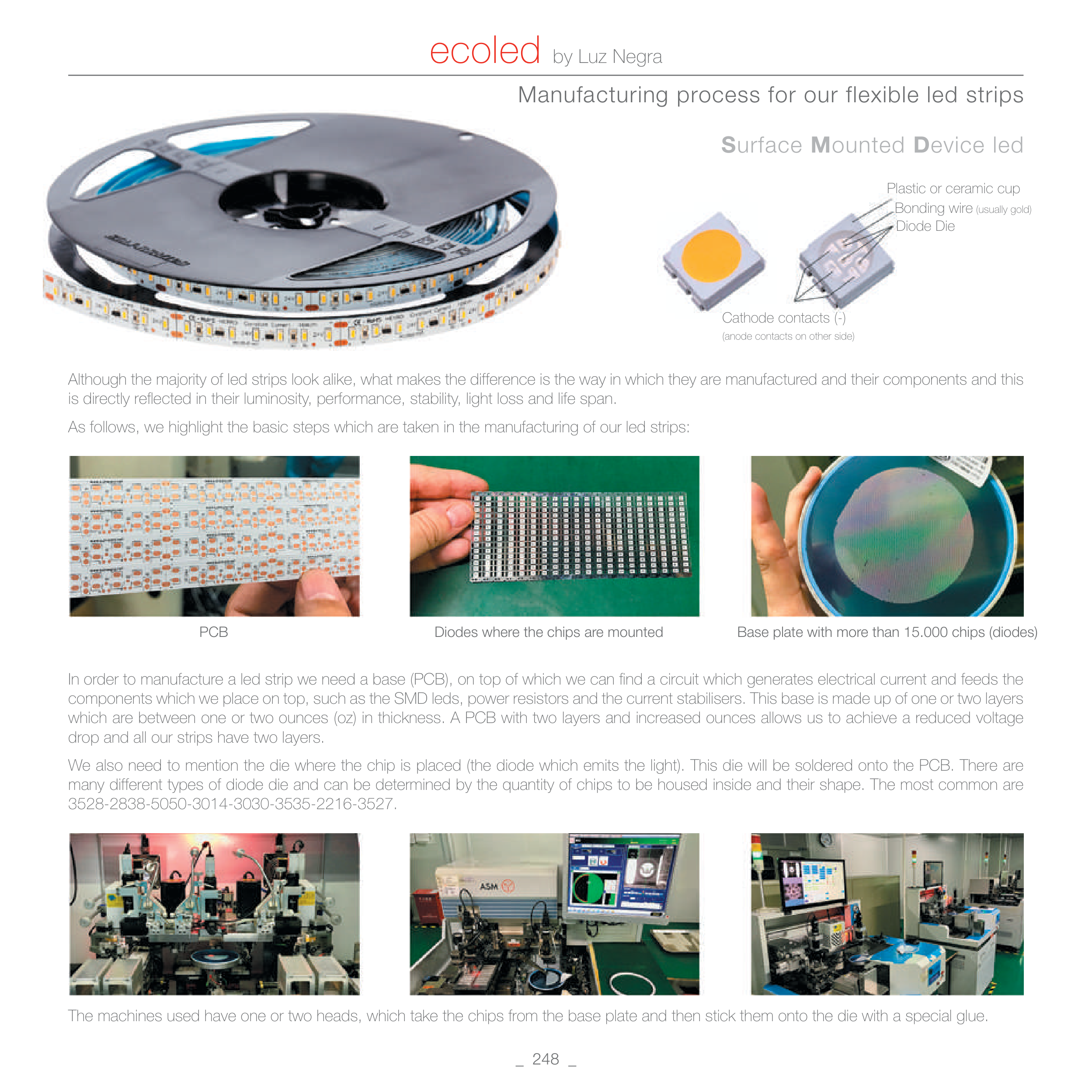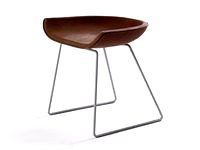_ 248 _
Surface Mounted Device led
Although the majority of led strips look alike, what makes the difference is the way in which they are manufactured and their components and this
is directly reflected in their luminosity, performance, stability, light loss and life span.
As follows, we highlight the basic steps which are taken in the manufacturing of our led strips:
In order to manufacture a led strip we need a base (PCB), on top of which we can find a circuit which generates electrical current and feeds the
components which we place on top, such as the SMD leds, power resistors and the current stabilisers. This base is made up of one or two layers
which are between one or two ounces (oz) in thickness. A PCB with two layers and increased ounces allows us to achieve a reduced voltage
drop and all our strips have two layers.
We also need to mention the die where the chip is placed (the diode which emits the light). This die will be soldered onto the PCB. There are
many different types of diode die and can be determined by the quantity of chips to be housed inside and their shape. The most common are
3528-2838-5050-3014-3030-3535-2216-3527.
The machines used have one or two heads, which take the chips from the base plate and then stick them onto the die with a special glue.
Plastic or ceramic cup
Bonding wire (usually gold)
Diode Die
Cathode contacts (-)
(anode contacts on other side)
PCB
Diodes where the chips are mounted
Base plate with more than 15.000 chips (diodes)
Manufacturing process for our flexible led strips
ecoled by Luz Negra




